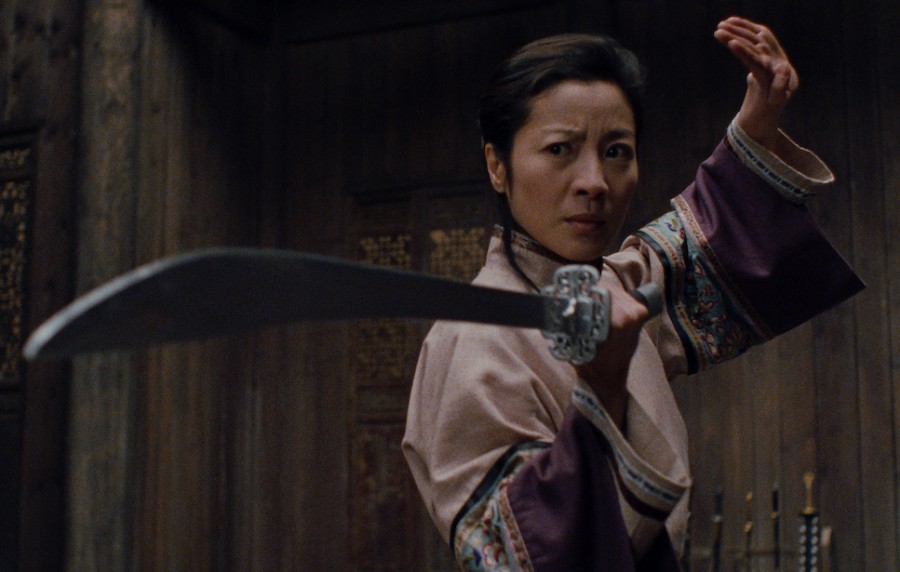Review: Crouching Tiger, Hidden Dragon restoration immortalizes masterpiece
Sony Pictures Classics’ 4K restoration of Ang Lee’s monumental martial arts classic Crouching Tiger Hidden Dragon further cements the film’s lasting legacy. The film will be shown in select theaters on February 17th.

A new 4K restoration of the martial arts film Crouching Tiger Hidden Dragon brings the film back to a new audience. (Courtesy of Sony Pictures Classics)
Ang Lee’s Crouching Tiger Hidden Dragon (2000), updated with a new 4K restoration, remains one of the most timeless and transformative works in martial arts cinema canon. From his impeccable fight on the ropes (fu wire) From battle choreography to career-defining performances by screen legends Michelle Yeoh, Chow Yun-Fat and Zhang Ziyi, Li’s epic tale of lovers and enemies lurking in plain sight maintains its status as the gold standard for the wuxia genre.
The latest release of Crouching Tiger, Hidden Dragon, restored by Sony Pictures Classics, is presented in its most visually captivating form. Adapted from the novel of the same name, the film, filled with youthful rebellion, generational grievances and repressed angst, unfolds in ethereal fast-paced footage of China’s pristine landscape. Scenic scenes of the vast expanses of the Gobi Desert and the lush flora of the Huangshan region immerse viewers in this fantastic landscape, reminiscent of the vibrant 山水画 (translated as pictures of mountains and sea) of the early dynastic periods. Fast-paced action scenes are made even more thrilling by brilliant choreography, and the film’s many moments of contemplative silence are crystallized in breathtaking clarity.
One aspect of the film that has stood the test of time is the somewhat intricate and flawless sets. Choreography by Hong Kong film legend Yuen Wuping. who also worked on films as in The Matrix (1999) and The Drunken Master (1978), every on-screen brawl walks a fine line between depicting an elegant ballet recital and a brutal display of violence.
While the film is certainly cutting edge and innovative, its use of traditional conventions such as wire fu pays homage to the revolutionary craftsmanship displayed in its seminal predecessors, especially the many martial arts films that were produced by the Shaw brothers studio. Entire sets, such as Yu Jiao Long (Zhang Ziyi)’s fight at the inn, are inspired by legendary Hong Kong director King Hu’s important martial arts film Dragon Inn (1967). The synthesis of reverence and fresh aesthetic makes Crouching Tiger, Hidden Dragon action sequences distinctive; very few of his successors even come close to emulating his graceful yet aggressive kinetic qualities.
Perhaps even more compelling than the depiction of clashing swords is the dual romance at the heart of this film. Li exemplifies both the restrained passion of two aging masters, Li Mu Bai (Chow Yun-Fat) and Xu Lian (Yeo), and the fiery forbidden romance between You Jiao Long and Luo Xiao Hu (Chang Chen). Through these two central relationships, Lee explores romantic longing and hidden desires, as well as challenging traditional notions of gender and presenting love as an act of defiance.
Although romantic relationships are not uncommon in martial arts films, one of the film’s longstanding contributions is the presentation of two complex female roles that often operate outside the gender norms imposed by men. They are both clearly capable of standing up for themselves and even outdoing their counterparts in combat. However, instead of reducing both characters to one-dimensional female protagonists, both Zhang and Yeoh emphasize the vulnerability, regret, and self-doubt that absorb these women in different ways. This intricate web of desires and responsibilities allows each actor to play incredibly subtle and heartbreaking roles that have left their mark on subsequent modern action movies.
The film also serves as a moment of convergence between the old guard and the new generation of Chinese cinema icons. It’s only fitting that Yeoh and Chow played the roles of two accomplished martial artists at a pivotal moment at the end of their careers. By the time the film was released in 2000, Yeoh and Chow had reached their peak as superstars among Chinese-speaking communities around the world. Actors of their generation played a decisive role in the decades of prosperity of the Chinese language film industry; at the dawn of the new millennium, the potential of Chinese-language cinema seemed limitless. Reflecting the film’s theme of passing on ancient heritage and duties, both actors symbolically pass on the baton to a new vanguard of new actors introduced by Zhang Ziyi and Chen, both of whom have become well-known actors in their own right. Presenting the viewer the old and the new, this film marks not only the end of an era, but also a bold step into an uncertain future.
The release of Crouching Tiger Hidden Dragon 23 years ago was a defining cultural moment for both Chinese and international film lovers. While many great films were released around the turn of the century, few can match the grandiose and poetic scope that Lee achieved in his greatest work. With this 4K restoration of the film, viewers can once again see what is arguably the pinnacle of martial arts cinema.
Contact Mick Gow at [email protected]
Dallas Press News – Latest News:
Dallas Local News || Fort Worth Local News | Texas State News || Crime and Safety News || National news || Business News || Health News
texasstandard.news contributed to this report.










